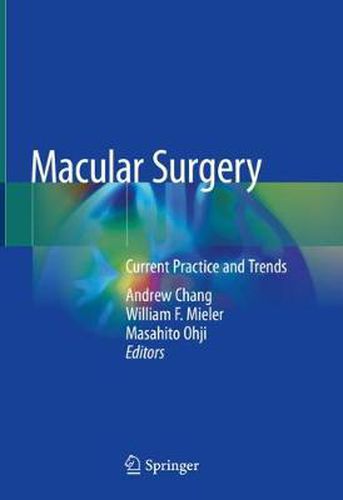Readings Newsletter
Become a Readings Member to make your shopping experience even easier.
Sign in or sign up for free!
You’re not far away from qualifying for FREE standard shipping within Australia
You’ve qualified for FREE standard shipping within Australia
The cart is loading…






Recent technological advances in the diagnosis of macular disorders have enhanced our understanding of these diseases. At the same time, advances in small-gauge vitrectomy instrumentation and techniques have improved the safety and efficiency of surgery, allowing macular conditions that would have otherwise resulted in blindness to be treated effectively, preserving patients’ sight. Macular surgery continues to evolve rapidly, thanks to exciting future technology trends.
This book provides a detailed and up-to-date overview of the field. It begins with essential information on macular anatomy and pathophysiology, examination techniques, and surgical instrumentation. In turn, it discusses a broad range of disease processes, including macular holes, epiretinal membrane, vitreomacular traction and myopic maculopathy. The role and benefits of advanced vitrectomy techniques including submacular surgery, prosthetic vision, robotic surgery, and stem cell and gene therapy are addressed in detail. A review of perioperative care and potential complications rounds out the coverage.
$9.00 standard shipping within Australia
FREE standard shipping within Australia for orders over $100.00
Express & International shipping calculated at checkout
Recent technological advances in the diagnosis of macular disorders have enhanced our understanding of these diseases. At the same time, advances in small-gauge vitrectomy instrumentation and techniques have improved the safety and efficiency of surgery, allowing macular conditions that would have otherwise resulted in blindness to be treated effectively, preserving patients’ sight. Macular surgery continues to evolve rapidly, thanks to exciting future technology trends.
This book provides a detailed and up-to-date overview of the field. It begins with essential information on macular anatomy and pathophysiology, examination techniques, and surgical instrumentation. In turn, it discusses a broad range of disease processes, including macular holes, epiretinal membrane, vitreomacular traction and myopic maculopathy. The role and benefits of advanced vitrectomy techniques including submacular surgery, prosthetic vision, robotic surgery, and stem cell and gene therapy are addressed in detail. A review of perioperative care and potential complications rounds out the coverage.